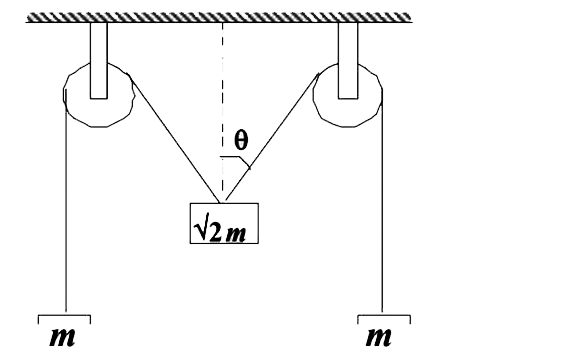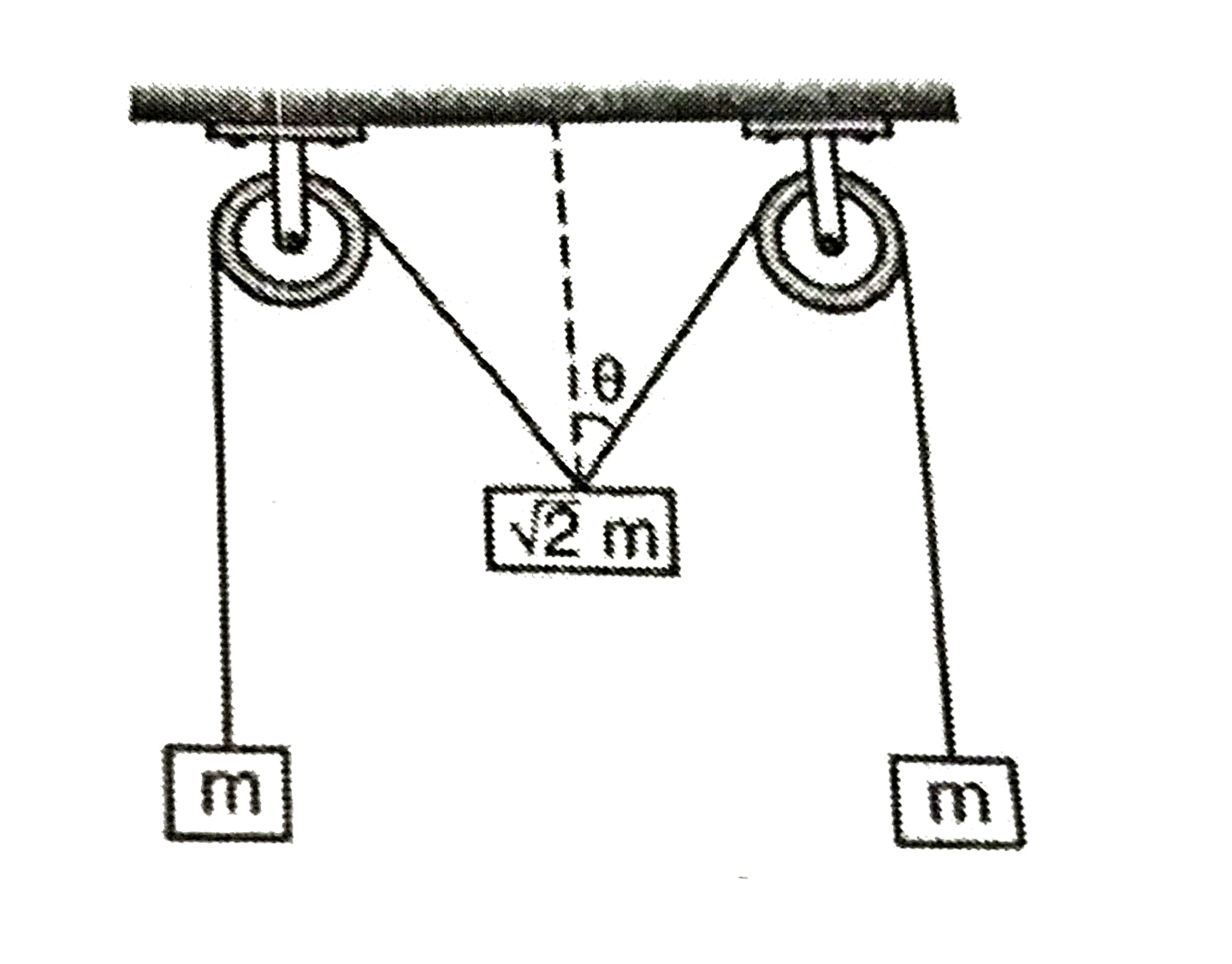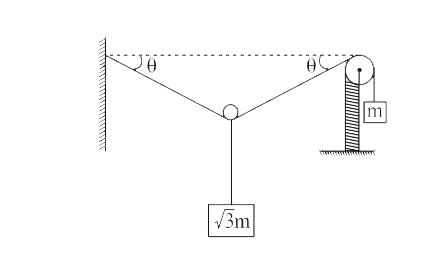In the given arrangement, for the system to remain under equilibrium, the '' should be:

The correct Answer is:C
Step by step video & image solution for In the given arrangement, for the system to remain under equilibrium, the 'theta' should be: by Physics experts to help you in doubts & scoring excellent marks in Class 12 exams.
Updated on:21/07/2023Topper's Solved these Questions
- LAWS OF MOTIONBOOK - AAKASH SERIESCHAPTER - LAWS OF MOTIONEXERCISE - PRACTICE EXERCISE
106 Videos
- LAWS OF MOTIONBOOK - AAKASH SERIESCHAPTER - LAWS OF MOTIONEXERCISE - EXERCISE - I
157 Videos
- GEOMETRICAL OPTICSBOOK - AAKASH SERIESCHAPTER - GEOMETRICAL OPTICSEXERCISE - ADDITIONAL PRACTICE EXERCISE (LEVEL-II PRACTICE SHEET (ADVANCED) INTEGER TYPE QUESTIONS)
10 Videos
- LOGIC GATESBOOK - AAKASH SERIESCHAPTER - LOGIC GATESEXERCISE - Exercise (Very Short Answer)
10 Videos
Similar Questions
The pulleys and strings shown in the figure are smooth and of negligible mass. For the system to remain in equilibrium, the angle θ should be

View SolutionThe pulleys and strings shown in the figure are smooth and of negligible mass. For the system to remain in equilibrium, the angle θ should be

View Solution
Knowledge Check
The pulley and strings shown in fig 15.3.16 are smooth and of negligible mass. For the system to remiain in equilibrium the angle θ should be
 AzeroB30∘C45∘D60∘
AzeroB30∘C45∘D60∘
The pulleys and strings shown in fig are smooth and of negligible mass. For the system to remain in equilibrium the angle θ should be:

View SolutionThe system is in equilibrium. Find the angle θ

View SolutionWhen a system is in equilibrium state
View SolutionIn given arrangement as shown in figure, the system is in equilibrium. Choose the correct option(g=10ms2)
View SolutionAssertion: Three concurrent force are F1,F2 and F3. Angle between F1 and F2 is 30∘and between F1 and F3 is 120∘. Under these conditions forces cannot remain in equilibrium.
Reason: At least one angle should be greater then 180∘.
View SolutionFor equilibrium of the system, value of mass m should be

View SolutionFor the system shown in figure , to be in equilibrium , determine mass m .

View Solution
